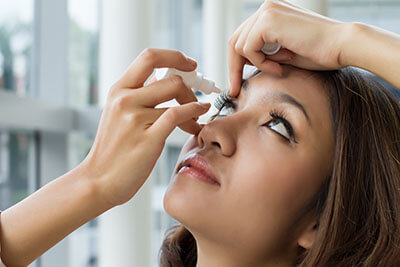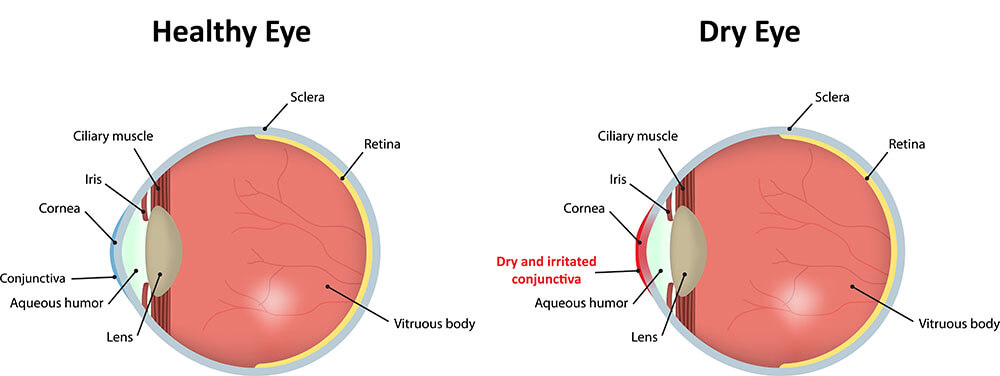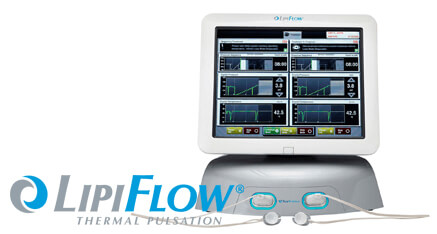Dry Eye & Meibomian Gland Dysfunction

Dry eye and eye discomfort are extremely common ocular complaints, particularly in post menopausal females. The root cause of the burning, itching and redness can be caused by a number of clinical conditions, but quite often Meibomian gland dysfunction is central to the problem.
At our practice, we carefully assess Meibomian gland health as well as comprehensively evaluating all aspects of tear function anatomy and physiology. We carefully assess blink health which has been more recently noted to be crucial to maintaining healthy gland function. Reduced Meibomian gland function correlates with symptoms of eye discomfort and redness.
Gland structure is observed via high definition trans illumination and infrared meibomian gland imaging. Structural compromise can then be identified and evaluated. Structural compromise in this area may not be completely reversible and failure to treat obstruction can cause further structural compromise.
What Is Dry Eye?
Dry eye syndrome occurs when the eye does not produce enough healthy tears. As a result, the eye lacks sufficient appropriate lubrication. This may cause persistent feelings of dryness, burning and scratching, and may also cause inflammation of the delicate external eye tissues such as the conjunctiva, the cornea and the eyelids. The eyes may appear red, and the eyelids and the area around the eyes may become swollen. Contrary to what the name might suggest, one of the symptoms of dry eye syndrome, often is watery eyes.
Dry eyes often present as “watery” because the persistent dryness, due to holes in the lipid or outer meibomian layer of the tear film, overstimulates production of the middle aqueous (watery) layer of the tear film, confusing the patient as to the root cause of their problem.

Please click here to schedule a personal consultation with Dr. Lippman if you notice one or more of these dry eye symptoms:
- Constant dryness
- Feelings of scratching and burning in your eyes
- Excessively watery eyes
- Excessive redness
Our staff will perform all appropriate testing, and Dr. Lippman will perform a thorough examination and recommend the most suitable treatment for your condition.
What Causes Dry Eye Syndrome?
The tear film covering the eyeball is an important part of a healthy eye. Tears constantly clean and nourish the eye, washing away minuscule debris and neutralizing microorganisms found on the eye’s surface. Patients with dry eye syndrome do not produce enough healthy tears to create a sufficient tear film. This can happen due to a variety of reasons:
- Medications: Dry eye is often caused by antihistamines, antidepressants, blood pressure medicines and many birth control pills.
- Climate: Dry, dusty climate is a major contributor to the onset of the dry eye syndrome.
- Insufficient Blinking: Сertain activities, such as working on the computer, may cause insufficient blinking, which in turn can cause eyes to become dry.
- Eye Surgery: Some LASIK and cataract surgery patients experience dry eye symptoms; this condition if often temporary.
- Medical Conditions: Certain diseases, such as lupus, rheumatoid arthritis and rosacea are associated with the dry eye syndrome.
- Contact Lens: Long-term wear of contact lens is another common cause of dry eye.
- Age: Dry eye often occurs in older patients, especially women who have undergone menopause.
Schedule Evaluation
Click the button below to schedule your evaluation today!
How Is Dry Eye Treated?
To manage the symptoms of dry eye, comprehensive treatment plans are usually necessary, and depend on the severity of the condition. These may include both home care and office based lid care cleansing therapies such as Blephex and Lipiflow treatment modalities. These treatments work well, especially if combined with conscientious prophylactic care at home. A wide spectrum of lid cleansers, as well as tear replacement products are now available, which can provide significant relief if specifically tailored to your individual needs. A number of prescription biologics are now available (such as the newly reconfigured Restasis eye drops, and Xiidra) which are designed not only to moisten the eye but, more importantly to stimulate the eye to produce more natural, healthy tears. Depending on the cause and symptoms of each patient’s dry eye syndrome, Dr. Lippman prescribes the most suitable treatment plan. He also often suggests simple lifestyle changes that can significantly reduce the occurrence of dry eye syndrome, such as reducing exposure to wind and dust and wearing sunglasses when outdoors, and when exposed to forced ventilation when driving. Dr. Lippman also takes the time to explain that all artificial eye drops cannot be used concurrently with contact lenses.
Recent research now indicates that highly purified fish oil products, preferably in triglyceride form, are an integral part of ocular nutrition, particularly with regard to tear film and ocular surface health.
Treating MGD with Lipiflow
Lipiflow is the only FDA approved treatment device for removing Meibomian gland blockage and restoring normal meibomian gland function. Lipiflow uses Vectored Thermal Pulsation (VTP) technology to apply heat to the inner eyelids, and massage to remove the obstruction in your Meibomian glands.

Treatment with Lipiflow is a major step forward now that we understand that the root cause of most dry eye is now felt to be a chronic progressive, condition, Meibomian Gland Dysfunction. MGD affects 86 % of all those with dry eye and is treatable!
Please ask your technician or any of our doctors about having a dry dye evaluation.
